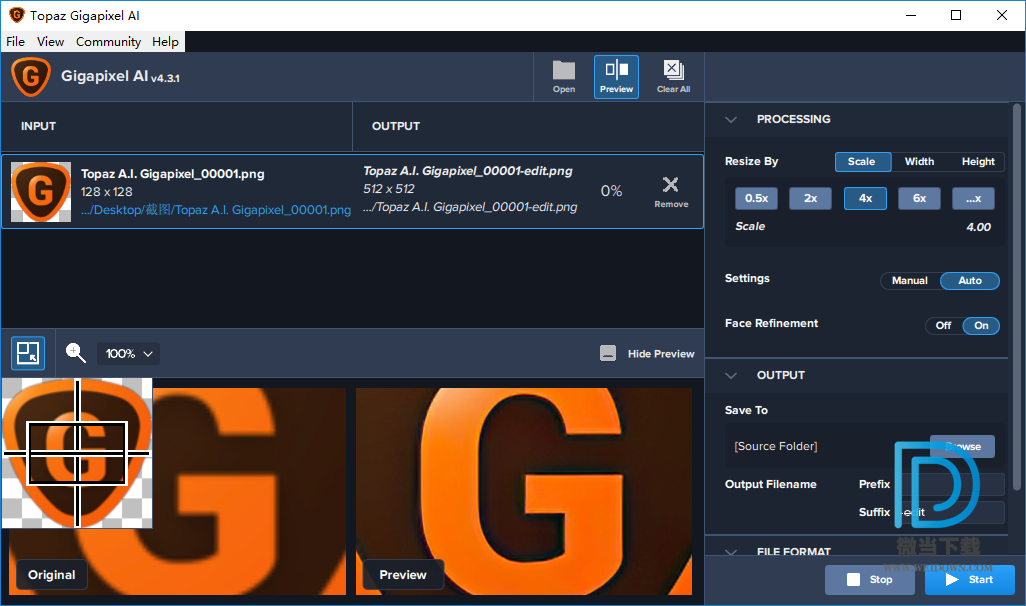
When running on our Mac’s GPU (the Intel HD Graphics 4000 1536 MB), it crashed frequently (Macs, particularly of this vintage, are notoriously poor in the GPU department). Gigapixel and while it does produce bigger files, the process isn’t always seamless. Now, there are still kinks in the technology. Other imaging software developers are preparing to launch programs using similar, AI-powered approaches. Gigapixel this year that can upscale an image by up to 600 percent. One of the first fruits of this work came from Topaz Labs, which launched a program called A.I.

The upshot is that it’s increasingly possible to take low-resolution images and convincingly upscale them to heretofore unimaginably large sizes without losing the image to artifacting and other visual irritants.Īrmed with this research, developers at several imaging software companies set about building their own models and neural nets to create upscaling software that could run on local computers (the academic researchers had the luxury of powerful servers). In 20, academic papers detailing how to generate “super-resolution” images from low resolution inputs began appearing in open-access online journals. These developments could have profound ramifications for the entire digital photography ecosystem–from capture to storage, display and transmission. Storage devices, both in-camera and externally, must grow bigger and faster to accommodate this never-ending push for more data.īut that may be about to change in potentially radical ways.ĭevelopments in artificial intelligence, specifically neural networks and generative adversarial networks (GANs) are beginning to reshape the contours of what’s considered useable information inside a digital media file. Image and video codecs in capture devices must preserve more and more information (preferably all the information). Between 50-megapixel DSLR image sensors and pixel-shift technologies, it’s not uncommon to see even if relatively inexpensive cameras pump out files weighing over 50MB.įor camera and sensor manufacturers, the pressure always points in the same direction: more. Medium format cameras routinely boast of file sizes that soar closer and closer to the 1GB level, if not exceed it. Since the dawn of digital photography, there’s been one truism for digital files: size matters and bigger is better.


 0 kommentar(er)
0 kommentar(er)
